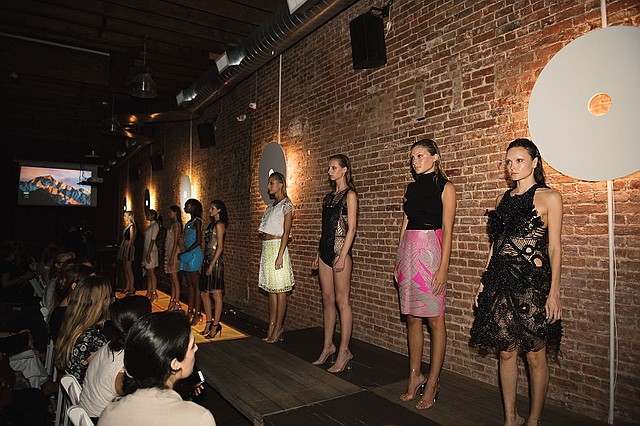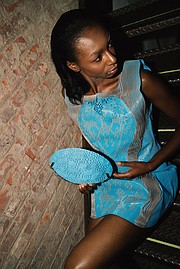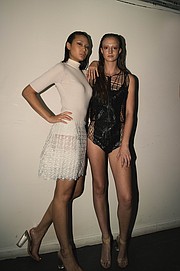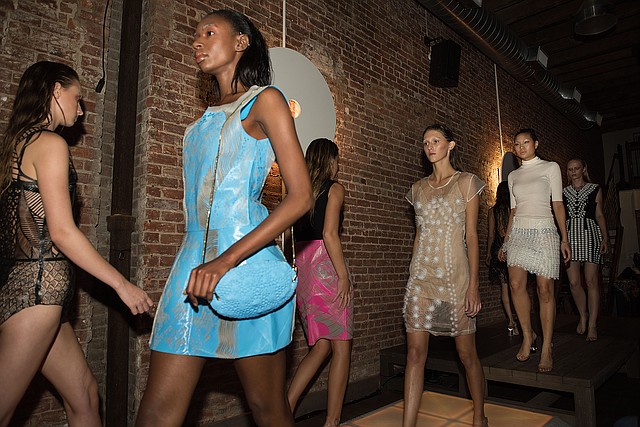3D Designs Become Wearable With Julia Daviy NYFW Collection
FASHION
Julia Daviy's Liberation Collection, which was shown during FashionHub's Fashion Meets Technology event, held Sept. 6 during New York Fashion Week at The Flat NYC. Photo: Vita Zamchevska
As of Thursday, May 2, 2019
Bringing more ethical manufacturing to fashion, Miami-based designer Julia Daviy unveiled The Liberation Collection—a line of 3D-printed clothing—during New York Fashion Week at FashionHub's Fashion Meets Technology event, held Sept. 6 at The Flat NYC. This was the first full women's clothing collection that was manufactured using only 3D-printing technology to be unveiled in the United States.
Despite the collection's chic, wearable pieces, designing seemed to come naturally to Daviy, who was more focused on the potential for improving clothing manufacturing by using an apparel-production process based on 3D-printing.
"I wasn't so focused on the collection, but instead I was always thinking about a more sustainable approach for clothes production," she said.
She was attracted to 3D printing's sustainable apparel-production process. Daviy was also fascinated by the movement toward smart clothing with sensors and wearables.
"I started to learn all this technology, the hardware, software and very soon I went to buy the best 3D printer on the market," she said. "There is a huge potential with a lot of the different technology in production."
Using large-format FDM 3D printers, TPU materials, flexible resin and SLA technology, Daviy hopes to bring a more ethical, less wasteful, approach to fashion production.
"This collection is just an example that, right now, we are able to create clothes that are very similar to leather, but with 3D-printing technology," she said. "We can create leather-like material and I think this is very important because we can offer new experiences to customers."
Many of the designs for this collection were inspired by patterns found among marine life, such as coral and exoskeletons or shells. Daviy emphasizes that the possibilities for creating texture and printed patterns is limitless with this approach to fashion design.
"The printing permits us to regulate thickness, shape, color and create any kind of pattern," she said. "Using leather in the clothing industry is not very good ethically. It also looks old fashioned. Why use a crocodile pattern when you can use any kind of pattern, such as a coral surface?"




